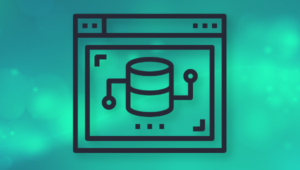Managing Data Storage with Blockchain and BigchainDB
Key Takeaways
- Ascribe, a startup that uses Bitcoin’s Blockchain to record unique references to digital artworks, has combined a NoSQL database (RethinkDB) with a Blockchain layer to create BigchainDB. This combination adds control, asset tracking, and an extra level of security, making it especially interesting to NoSQL database users.
- BigchainDB, thanks to the Blockchain layer, claims to be fully decentralized. It also adds transactional support, a feature often missing from NoSQL databases. This support guarantees that a database change has occurred when writing to the underlying NoSQL database via a Blockchain layer.
- BigChainDB can fill in gaps missing from current NoSQL and distributed databases, which may provide valid business or use cases. For Blockchain enthusiasts, it completes the puzzle for a completely decentralized application stack, potentially changing the way applications are developed, deployed, and maintained.
There’s no denying that whilst Bitcoin’s future may be hazy right now, the underlying technology it relies upon — the Blockchain — has revolutionized many industries and projects, with more to come.
Ascribe is a fascinating startup that uses Bitcoin’s Blockchain to record a limited quantity of unique references to digital artworks. Thus making them traceable, accountable and (hopefully) more valuable, due to this finite amount of ‘copies’.
Ascribe hit technological problems with this approach, and those problems were primarily due to Bitcoin’s Blockchain itself. Writing everything to it is slow, costly (currently 80c each time) and has a maximum number of daily entries and total capacity for writes. It’s also counter to typical scalable database technologies, adding nodes doesn’t improve performance and has no real query language. This makes scaling a business that relies upon the Bitcoin Blockchain a challenge.
But the Blockchain concept is a strong one and the past years have seen an increasing rise in usage and legitimacy, with even major banks announcing development of technologies inspired by the concept.
Ascribe decided to combine the best of both worlds, taking a proven NoSQL database (RethinkDB) and adding a Blockchain layer on top to add control, asset tracking and an additional level of security.
This combination of technologies is especially interesting to NoSQL database users, as traditionally, few of them support ‘transactions’ that help guarantee a database change has taken place. By writing to an underlying NoSQL database via a Blockchain layer, BigchainDB adds transactional support.
Thanks to the Blockchain layer, BigChainDB also claims to be fully decentralized. Whilst many distributed NoSQL databases claim this, there is often a pseudo master/slave setup.
Installing BigChainDB and Dependencies
There are couple of ways to install BigChainDB. First I tried the Docker images, but ran into some connection issues, finding the Python packages most reliable.
- Install RethinkDB, for other Mac users, there is also a Homebrew package available.
- Install Python 3.4+.
- Install BigChainDB with Pip –
sudo pip install bigchaindb - Start RethinkDB with
rethinkdb - Start BigChainDB with
bigchaindb startwhich will also configure things for you. - Open the BigChainDB (actually the RethinkDB UI) admin UI at
http://SERVER_IP:58080/
Simple Example – Message Allocation and Tracking
One of BigchainDB’s prime use cases (and why Ascribe created it), is for tracking assets, so let’s make a simple example in Python. First run the following commands in your terminal.
pip install bigchaindb
bigchaindb configure
bigchaindb show-configCreate a new file, app.py and add the following:
from bigchaindb import Bigchain
b = Bigchain()
print(b)This imports the bigchaindb library, creates a new object and connects to it with the settings file just created.
Then run the Python application:
python app.pyYou should see something like <bigchaindb.core.Bigchain object at 0x1085b0dd8>, this tells us that everything is well.
Add the following:
from bigchaindb import Bigchain
import time
b = Bigchain()
spuser_priv, spuser_pub = b.generate_keys()
print("User Created")
digital_asset_payload = {'msg': 'This is my special message just for you'}
tx = b.create_transaction(b.me, spuser_pub, None, 'CREATE', payload=digital_asset_payload)
print("Transaction Written")
tx_signed = b.sign_transaction(tx, b.me_private)
b.write_transaction(tx_signed)
print ("Transaction Written to BC, now waiting")
time.sleep(10)
tx_retrieved = b.get_transaction(tx_signed['id'])
print(tx_retrieved)This creates a user and associated keys for access to the database — remember that extra level of security. Then a payload for writing to the database is created, assigning the required keys, and written.
It will take a few seconds for the new transaction to pass from the Blockchain layer to the database. The code waits for ten seconds and then retrieves and prints the record. You should see something like:
{
"signature": '304502205",
"id": "0f442bcf4a42",
"transaction": {
"timestamp": "1457104938.430521",
"data": {
"hash": "b32779e57",
"payload": {
"msg": "This is my special message just for you"
}
},
"operation": "CREATE",
"current_owner": "hFJKYk2",
"new_owner": "26pdiQTTx",
"input": None
}
}
}You now have one special message that you would like one person to have access to:
...
print("Now to transfer")
spuser2_priv, spuser2_pub = b.generate_keys()
print("Second User Created")
tx_transfer = b.create_transaction(spuser_pub, spuser2_pub, tx_retrieved['id'], 'TRANSFER')
print("Transfer Created")
tx_transfer_signed = b.sign_transaction(tx_transfer, spuser_priv)
b.write_transaction(tx_transfer_signed)
print ("Transaction Written to BC, now waiting")
time.sleep(15)
tx_transfer_retrieved = b.get_transaction(tx_transfer_signed['id'])
print("Transferred")
print(tx_transfer_retrieved)This creates a second user and then takes the transaction ID of the special message and transfers it to the second user. The Blockchain layer of BigChainDB will prevent users and your code from executing the same action twice. If you tried running the code above again, a double spend exception will be thrown.
This examples shows a small set of the methods that BigChainDB adds to RethinkDB, find the full list here.
HTTP Endpoint
Currently, the only client library available for BigChainDB is Python, more may follow, but in the meantime, a limited HTTP endpoint is available for querying existing transactions:
http://localhost:5000/api/v1/transactions/tx_id
Or write a new transaction with:
http://localhost:5000/api/v1/transactions
Adding the following payload, where operation can be changed to suit the different types of transaction that can be written :
{
"id": , ""
"signature": "",
"transaction": {
"current_owner": "",
"data": {
"hash": "",
"payload": null
},
"input": null,
"new_owner": "",
"operation": "",
"timestamp": ""
}
}Part of a Decentralized Future
Ignoring its Blockchain heritage for a moment, BigChainDB offers to supply a lot of functionality missing from current NoSQL and distributed databases. That fact alone may be a reason to try it and may provide a valid business/use case.
For the Blockchain aficionados amongst you, it also completes the puzzle for a complete decentralized application stack. In theory there is now Ethereum for applications, IPFS as a file system and now BigChainDB for data storage. The pieces are in place for a very different way of developing, deploying and maintaining applications, leading to a fascinating future that I would love to hear your opinions on in the comments below.
Frequently Asked Questions (FAQs) about Managing Data Storage with Blockchain and BigchainDB
How does blockchain technology enhance data storage security?
Blockchain technology enhances data storage security through its decentralized nature. Unlike traditional data storage methods that store data in a central location, blockchain distributes data across a network of computers. This makes it difficult for hackers to compromise the data as they would need to breach multiple systems simultaneously. Additionally, blockchain employs cryptographic algorithms to secure data transactions, making it nearly impossible to alter or delete data once it’s been added to the blockchain.
What is BigchainDB and how does it relate to blockchain?
BigchainDB is a blockchain database designed for large-scale applications. It combines the benefits of blockchain technology, such as decentralization, immutability, and built-in asset support, with the features of traditional databases, like indexing and querying. This makes BigchainDB an ideal solution for managing and storing large amounts of data securely and efficiently.
How does BigchainDB handle data storage?
BigchainDB handles data storage by distributing it across a network of nodes, similar to a blockchain. Each node in the network stores a copy of the entire database, ensuring data redundancy and high availability. BigchainDB also uses cryptographic algorithms to secure data transactions, ensuring data integrity and authenticity.
What are the benefits of using blockchain and BigchainDB for data storage?
Using blockchain and BigchainDB for data storage offers several benefits. These include enhanced data security, high availability, data immutability, and scalability. Additionally, BigchainDB’s support for asset transactions makes it an ideal solution for applications that require the tracking and management of digital assets.
How does BigchainDB compare to other decentralized data storage offerings?
BigchainDB stands out from other decentralized data storage offerings due to its unique combination of blockchain and traditional database features. While most blockchain-based storage solutions focus on data security and immutability, BigchainDB also offers features like indexing and querying, making it more versatile and suitable for a wider range of applications.
Can BigchainDB be used for launching tokens?
Yes, BigchainDB can be used for launching tokens. It supports built-in asset transactions, making it possible to create, transfer, and manage digital assets, including tokens, on the BigchainDB network.
What is the role of blockchain in decentralized data storage?
In decentralized data storage, blockchain plays a crucial role in ensuring data security, integrity, and availability. It distributes data across a network of nodes, making it resistant to data loss and cyber attacks. Additionally, blockchain’s immutability feature ensures that once data is added to the blockchain, it cannot be altered or deleted.
How does blockchain storage compare to traditional data storage methods?
Compared to traditional data storage methods, blockchain storage offers enhanced security, data immutability, and high availability. However, it can be more complex to implement and may require more resources due to its decentralized nature.
What are the potential applications of blockchain and BigchainDB in data storage?
Blockchain and BigchainDB can be used in a wide range of data storage applications. These include supply chain management, healthcare records management, digital identity verification, and asset tracking and management, among others.
What are the challenges of implementing blockchain and BigchainDB for data storage?
Implementing blockchain and BigchainDB for data storage can present several challenges. These include the complexity of blockchain technology, the need for significant computational resources, and potential scalability issues. However, these challenges can be mitigated with proper planning and the use of solutions like BigchainDB that combine the benefits of blockchain with the features of traditional databases.
Developer Relations, Technical Writing and Editing, (Board) Game Design, Education, Explanation and always more to come. English/Australian living in Berlin, Herzlich Willkommen!






